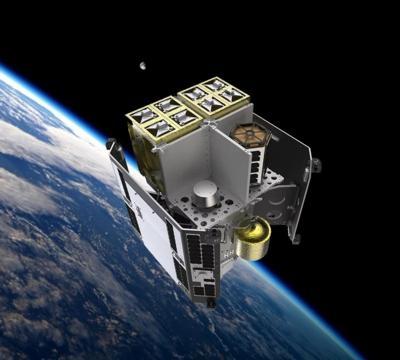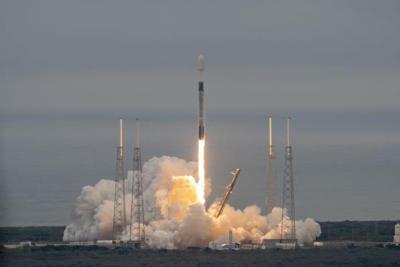Sun, Apr 03, 2022
D-Orbit's Package Includes Plant Growth Experiments, USAF Research Sats, and Personal Tchotchkes
D-Orbit's Spacelust has made its way into space aboard the SpaceX Transporter-4 mission, taking its spot as the 5th mission using their proprietary ION Satellite Carrier.

The ION system is designed to be a versatile and cost-effective orbital transfer vehicle designed both to precisely deploy satellites and perform technology demonstrations for third-party payloads in orbit. Spacelust saw the ION successfully deployed at a 500 km Sun synchronous orbit. D-Orbit chief commercial officer, Renato Panesi, said the 5th ION in its orbital fleet is a sign of their rapid growth.
“Every mission we launch is built upon the success of the ones that came before it," he said after news of a successful deployment was announced. "We are steadily increasing our performance with each new mission, expanding our customer base and growing our exceptional team. As we execute our strategic plans, we are continuing to demonstrate the strength of our technology and are advancing D-Orbit’s path to enabling the transportation and logistics infrastructure to drive the evolving space economy.”
Aboard the ION, payloads from Kleos Space, Upmosphere, and the Space Exploration Laboratory found their way to their designated positions. Kleos sent 4 satellites to augment their growing constellation, bringing the total to 12. The change will increase the average daily revisit rate to around 5 times per day over an area of interest as well as increase the accuracy of geolocation for frequency transmissions to within 300 meters for ISR customers around the world.
Upmosphere sent an oddity in line with the company's mission: A wooden UP-box containing customer mementos. Their operation advertises the capability to send personal effects into space for several years aboard the ION.

The Space Exploration Laboratory sent its 3U CubeSat, the PlantSat, in order to study the growth a plants in LEO in an environment designed to replicate conditions on the martian surface. It was joined by Suchai 2 and Suchai 3, which will perform "basic science research" funded by the U.S. Air Force Office of Scientific Research, a branch of the AFRL. The satellite data gleaned will be studied by multidisciplinary teams, which will "undertake cutting edge research on scientific exploration and technological development."
More News
From 2014 (YouTube Version): Innovative Aerodynamic Technologies Produce Game-Changing Results At the NBAA 2013 convention, ANN CEO and Editor-In-Chief, Jim Campbell had a chance t>[...]
“This plan opens insurance options to a much wider variety of Canadian aviators across the country who have otherwise had more challenges with securing insurance coverage... >[...]
Taxi The movement of an airplane under its own power on the surface of an airport (14 CFR section 135.100 [Note]). Also, it describes the surface movement of helicopters equipped w>[...]
Aero Linx: The Vertical Flight Society (VFS) The Vertical Flight Society, formerly the American Helicopter Society, is the non-profit technical society for the advancement of verti>[...]
Also: Sustainable Aircraft Test Put Aside, More Falcon 9 Ops, Wyoming ANG Rescue, Oreo Cookie Into Orbit Joby Aviation has reason to celebrate, recently completing its first full t>[...]
 Classic Aero-TV: Active Winglets -- Tamarack Aerospace Partners with Cessna
Classic Aero-TV: Active Winglets -- Tamarack Aerospace Partners with Cessna Aero-News: Quote of the Day (05.03.25)
Aero-News: Quote of the Day (05.03.25) ANN's Daily Aero-Term (05.03.25): Taxi
ANN's Daily Aero-Term (05.03.25): Taxi ANN's Daily Aero-Linx (05.03.25)
ANN's Daily Aero-Linx (05.03.25) Airborne 05.02.25: Joby Crewed Milestone, Diamond Club, Canadian Pilot Insurance
Airborne 05.02.25: Joby Crewed Milestone, Diamond Club, Canadian Pilot Insurance




